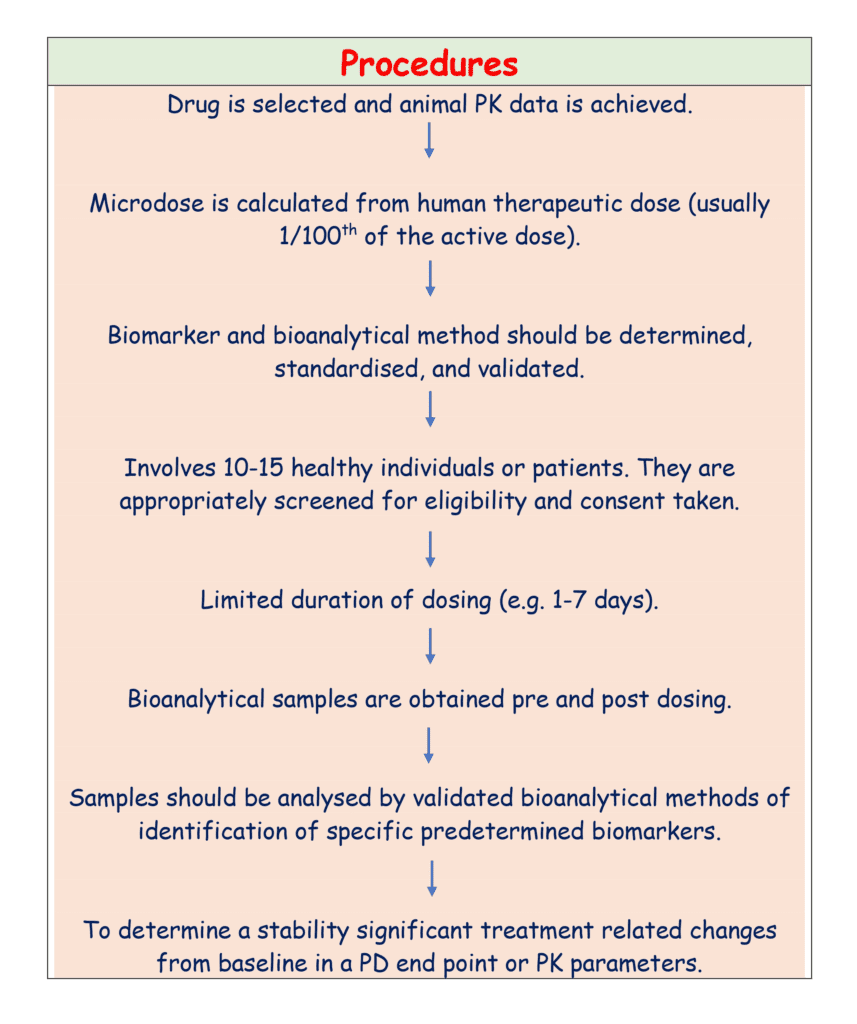Author- Dr. Md Shamim, MD
Table of Contents
ToggleOverview
Phase 0 Trial is a First-In-Human trial, conducted prior to traditional Phase 1 dose escalation, safety, and tolerance studies. It can be initiated with a less extensive pre-clinical data than traditional Phase 1 trial. It is also referred as Pre-phase 1 trial or Pilot study or Exploratory Investigational New Drug (IND) study. Limited number of subjects (≈10-12) and very limited dose of drug exposure required. Phase 0 studies use only a few small doses of a new drug in a few healthy people. Unlike other phases of clinical trials, there is almost no chance the people in phase 0 trials will benefit. The benefit will be for other people in the future. And because drug doses are low, there is also less risk to those in the trial. Phase 0 studies are not widely used, and there are some drugs for which they would not be helpful. Phase 0 studies are very small, often with fewer than 15 people, and the drug is given only for a short time. They are not a required part of testing a new drug.
Objectives of a Phase 0 Trial
- To evaluate and select the most promising drug candidate for further development when two or more analogue candidates are available.
- To confirm whether the mechanism of action defined in non-clinical models can be achieved in human.
- To Inform subsequent development of the agent.
- To enhance efficiency of subsequent development of the agent.
- To increase chance of success of subsequent development of the agent.
- To save time and money that would have been spent on later phase trials.
- To speed up and streamline the drug approval process.
What are types of Phase 0 Trial?
Pharmacokinetics or imaging studies
- Evaluate human distribution and target binding.
- Preclinical toxicological studies should demonstrate that a dose 100 times of the proposed human dose does not induce Adverse Effect.
- The Clinical starting dose is generally 1/100th of normal dose (microdose).
Pharmacologically relevant doses studies
- Evaluate Bioavailability of two or more analogues to select a lead agent.
- Preclinical toxicological studies must establish the No-Observed Adverse Effect Level (NOAEL) in rodent 2- week toxicological study.
- The Clinical standing dose is generally 1/50th of this dose (not microdose).
Pharmacodynamic end point Studies
- Evaluate whether the new molecular entity modulates its intended target.
- Supporting preclinical toxicological studies are generally short term.
Why are Phase 0 Trials Needed?
- There is a need to improve the efficiency and success rate of clinical trials. Most drugs that fail in late stages of clinical development.
- Late failure (due to bad drug or target) means wasted resources, including patients, so minimise the time and resources.
Why drugs fail in the late stages of clinical trial?
- Unfavourable pharmacokinetics.
- Lack of efficacy continues to play a major role.
- Lack of predictive animal models.
What are procedures of Phase 0 Trial?

Phase 0 Trial: Ethical Considerations
Potential barriers to enrolment
- No therapeutic intent or chance of benefit.
- Pre- and post-treatment tissue biopsies and other invasive procedures.
- Delay or exclusion from other trials or therapies.
External concerns about ethics and availability of patients for study
Institutional Ethics committee review and input
Informed Consent Process
- Need to clearly explain the rationale for the study.
- Need to define the limited treatment and follow up period.
- Need to clearly state that there is no anticipated clinical benefit to the participant.
Measures of Success of Phase 0 Trial
- Promising candidate drugs are identified and prioritized early.
- Less promising drugs are eliminated early in development.
- Efficiency and success rate of Phase 1-2 trials are improved.
- Less drugs fail in late stages of clinical development.
- Higher proportion of drugs in clinical development make it to registration and FDA approval.
- Resources shifted to Phase 0 conserve resources in subsequent development, including highly valued patient participation.
Emerging Uses of Phase 0 Trial
- Measuring drug concentration.
- Detecting receptor modulation and biomarker.
- Obtaining drug clearance data by using an IV microdose.
- Obtaining metabolic profile of a drug by microdose study.
Conclusion
Finally, we conclude that Phase 0 Trial is a microdosing study, in which clinical starting dose is generally 1/100th of the active dose. It reduces cost and time of drug development. In this study risk of Adverse Effect is negligible because very minute quantity of drug is used. But limitation of the study is discouraged of volunteers due to absence of any therapeutic and diagnostic benefit.
References
- Basic and Clinical Pharmacology, Katzung
- Postgraduate Pharmacology, Sougata Sarkar
- Phase 0 Clinical Trials: Conceptions and Misconceptions

You’re very welcome! I’m glad to hear that you’re open to exploring various topics. If you have any specific questions or areas of interest you’d like to delve into, please feel free to share them. Whether it’s about the latest advancements in technology, recent scientific discoveries, thought-provoking literary works, or any other subject, I’m here to offer insights and assistance. Just let me know how I can help, and I’ll do my best to provide valuable information and engage in meaningful discussions!
Thank you for your response! I appreciate your openness to exploring various topics. If you have any specific questions or areas of interest you’d like to discuss, please feel free to share them. Whether it’s about the latest advancements in technology, recent scientific discoveries, thought-provoking literary works, or any other subject, I’m here to offer insights and assistance. Just let me know how I can help, and I’ll do my best to provide valuable information and engage in meaningful discussions!